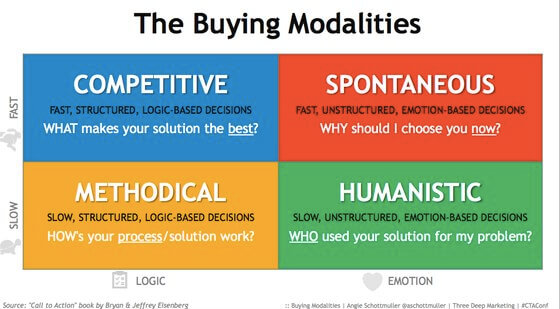We ALL know that social proof works well and that it’s important, so why are so many businesses getting it wrong? *News Flash*, there’s more to social proof than just trust seals and the “As seen at” section on your site.
Somehow, social proof has become yet another conversion optimization tactic used in a completely wrong way. It’s become yet another task to mark on a checklist as “done” and is almost always used with no strategy or careful planning.
Table of Contents
This mistake is costing businesses A LOT of money
Over the past 7 years I’ve ran thousands of A/B test and have seen time and time again that social proof is one of the most important elements of a landing page or a website. So, instead of just planting social proof randomly on your page with a few logos, it should actually be part of your entire conversion optimization strategy and act as one of the most important (and successful) “sales people” on the page.

What social proof looks like on most websites
First, Let’s Get Everyone on the Same Page
Social proof, is a way of appealing to our customer’s most inner emotional needs, it doesn’t work alone, it’s there to support your messaging, your design, colors and the entire content strategy. It’s there to create a better customer experience and sell.
Social proof done well:
- Helps the customer visualize themselves happily with your solution
- Addresses the most common objections
- and helps customers feel safe to choose you.
Planned and executed carefully, you can spark certain emotional triggers that influence the visitor’s decision-making process and grow your business.
I’ve seen countless cases of meaningless social proof.
Marketers using testimonials or reviews that don’t reflect their customers, or focusing on aspects customers’ don’t care about and result in having little to no effect on conversion rates. Which basically means missing out on huge potential to turn more visitors into customers and build trust.
The key to successful social proof…
To make the most of social proof you have to truly get to know your customers better. Understand what value they’re looking for, what their goals are, what challenges they face, the objections they have and only then can you truly create social proof that increases conversions and reinforces your messaging.
So that’s what we’re going to do today, learn how to identify the right content for your social proof and discover how to take that “ok” social proof you have right now on your site and make it work a hundred times better with a few of my best practices and tested methodologies.
Defining Your Social Proof Content
Before you go ahead and start placing social proof on your site, you’ll need to devise a strategy for it. Our goal is to support the site’s messaging and most importantly address obstacles, issues and objections by our customers. There are two steps to doing that:
Step #1 Conduct Interviews
To really understand your customers better and find motivating content for your social proof you have speak to your customers. Ask them questions, get their opinions, objections and any information you can collect that will give you a window into any fears and desires they may have. Then you need to talk to anyone and everyone who has a touchpoint with the end user within your team. This could be your sales department, customer support, retention and even account managers – anyone who can give you insight to their challenges, needs and main obstacles they face.
Remember, a potential customer arrives on your site looking to solve a problem, whether it’s the challenge of finding something to wear, a need for a software to optimize their work routine or a service to help simplify their day-to-day, whatever the reason – it’s our goal to identify that challenge and solve it. We solve it with design, messaging, colors, content and our social proof. Below is a list of some basic questions you want to get answers to:
- What are the most common questions being asked by customers?
- Why do people choose your service?
- What obstacles do people face while on the site?
- What’s the number one thing that stops people from buying?
- What is the one thing that always reassures customers?
- What are the customer’s main fears with using your solution?
- Any special stories or cases that stand out?
These questions will give you an indication to what content is missing on your site or may need highlighting, and give you an idea of what you could answer in a form of a testimonial, review or any other form of social proof.
Step 2: Learn and Profile Customers
Now that you’ve taken the time to speak to your customers and those who connect with them on a weekly/daily basis, you should take a step further in segmenting your social proof according to the basic profiles of your customers.
One of the most well known ways to segment customers is the “Buyer Modalities” system. Introduced by Brian and Jeffrey Eisenberg in their best selling book “Waiting for your cat to bark?”, the buyer modalities system was designed to help businesses categorize their customers better and understand their purchasing behavior. It is a great way to segment and create the right content per personality group.

Source: Angie Schottmuller
However let’s make one thing clear, this method of categorizing all human beings into 4 exact groups isn’t exact science because most people do not fit into one category. If you don’t mind the analogy, it’s like being sorted into a Hogwarts house; Gryffindor’s are supposed to be brave, Hufflepuff – kind, Ravenclaw have all the smarts and Slytherin’s are, well.. Cunning or ambitious, depends on how you look at it. However, most of us would categorize ourselves within two or even three houses and the same goes with personality types, buyer modalities and any other categorizing systems. These grouping systems should be used as the basis for understanding customer personalities but aren’t worth much without adding a lot more information and depth to them by observing our data, the customers themselves and our experience with them. There’s no magic way to divide people up, but it does help to classify them in groups to better understand our customers’ general purchasing behavior.
These categorizing systems go all the way back to ancient Greece when Hippocrates divided all human behavior into 4 personality traits. Years later, Keirsey added to Hippocrates’s scheme and built the 4 temperaments. The Eisenbergs did a lot of research and hard work and converted all of these systems into 4 basic types for marketers to use. Each persona is categorized according to two main elements – how fast or slow they make a purchasing decision and if they’re driven by logic or emotion.
The Four Buyer Modalities
Competitive
Definition: People who fall into this category are all about getting to the bottom line FAST. These characters are driven by logic, goals they’ve set up for themselves and do their research before any purchase. Competitive characters want to know immediately what’s in it for them, and why your solution is the best for them. According to the Eisenbergs 5-10% of the population falls within this modality.
 Famous Character: Professor Dumbledore is a quick and goal oriented person. He knows what he wants and has a clear plan for what he’s out to get. When he’s on a mission, he’s out there to get the answers he wants FAST. He bases all his decisions on facts, numbers and though he rarely admits it, he likes the feeling of recognition, solving a problem and succeeding on his mission.
Famous Character: Professor Dumbledore is a quick and goal oriented person. He knows what he wants and has a clear plan for what he’s out to get. When he’s on a mission, he’s out there to get the answers he wants FAST. He bases all his decisions on facts, numbers and though he rarely admits it, he likes the feeling of recognition, solving a problem and succeeding on his mission.
Social Proof Strategy: The competitive persona will be looking for solid evidence in your social proof; numbers, facts and the bottom line. Consider also highlighting the recognition people get from using your solution, a sense of control and personal achievements. For example, rather than displaying logos of their own company being featured in the news, the social proof below focuses on the customer’s outcome: being featured in well-known websites.

Spontaneous
Definition: 25-35% of the population falls into this category. The spontaneous character is driven by emotion, makes decisions quickly and tends to look for their immediate value. Their purchasing behavior is subjective to that moment, how they feel and what what they desire (many times irrationally). Due to their quick decision-making process they also tend to suffer from buyer’s remorse.
 Famous Character: Ron Weasley is a classic spontaneous figure, he gets easily distracted, acts in the moment (often without taking the time to think things through), wants to enjoy life, save time and most times, wants to be trending.
Famous Character: Ron Weasley is a classic spontaneous figure, he gets easily distracted, acts in the moment (often without taking the time to think things through), wants to enjoy life, save time and most times, wants to be trending.
Social Proof Strategy: The Spontaneous character will be searching for immediate personalized answers; “what’s in it for me?” Consider highlighting your speedy service and the amount of time you save. Emphasize being well-known and popular and use descriptive words while telling your stories to help them visualize the immediate benefit.
Methodical
Definition: Similar to the competitive character, the methodical is also driven by logic and knowledge, but this type of persona takes its time. They may visit your website a few times, review many competitors, pay a lot of attention to every detail and search for a clear process. They want to know what they’re getting themselves into, how long it will take and what each step in the process holds.
 Famous Character: Hermione Granger is driven by knowledge, she’s a problem solver, thorough in her work, takes every detail into consideration and is intolerant to inefficiency, the classic methodical.
Famous Character: Hermione Granger is driven by knowledge, she’s a problem solver, thorough in her work, takes every detail into consideration and is intolerant to inefficiency, the classic methodical.
Social Proof Strategy: Words like “compare” and “evaluate” are great for this character. Focus on the process in your testimonial stories, any methodologies you follow and statistics to make this character feel comfortable and find value in your social proof. The example below features numbers and details the Methodical character cares about:

Humanistic
Definition: The humanistic persona tends to take their time with their decision making process, however their decision making process is mainly based on emotion and subjective feelings. As opposed to the spontaneous character who is an impulse shopper, the humanistic cares a lot about the company they buy from. They care about personal relationships, being part of a community and being included as part of a big group. Humanistic types want to make a difference, they place great value in trust and personal connections (especially when purchasing from brands).
 Famous Character: Harry Potter is a classic Humanistic. He cares about others, wants to be included and be part of the family. He cares about personal stories and most times takes some time to make a decision which is based on his personal relationship with that person (or brand). He connects to people (and different creatures) on a personal level and is scared of ending up alone.
Famous Character: Harry Potter is a classic Humanistic. He cares about others, wants to be included and be part of the family. He cares about personal stories and most times takes some time to make a decision which is based on his personal relationship with that person (or brand). He connects to people (and different creatures) on a personal level and is scared of ending up alone.
Social Proof Strategy: These type of characters search for real stories, they want to know how people like them overcame similar obstacles and how they can connect with others. Highlight the sense of community, family and trust in your social proof.
Now that we have a general idea of what different types of buyers are looking for, we can review our data, surveys and knowledge about our customers to create the social proof our customers are looking for. Remember to steer away from categorizing your customers as one persona only and continuously think about how you can combine different needs of different buying modalities.
Next, let’s take a look at some best practices and tips for taking your social proof to the next level.
10 Tested Methods for Optimizing Your Social Proof
Use 3rd party reviews
People trust others more than they trust a company or brand, however well known it is. While self testimonials are nice to have, 3rd party reviews, testimonials and other kinds of social proof reflect more trustworthy and authentic opinions about you. The example below does the exact opposite (which is very common) – This is a quote provided by the company about themselves. They have many of these throughout the website, with no signature for us to know who said it within the company either.

Plan the Location
Most times social proof is placed randomly according to what looks nice in the design. However location, context and timing matter a lot for conversion. Remember, that your social proof is meant to support your messaging, so place it in strategic locations such as below the call to action button for example where people need to take action and that social proof can give them the extra push they need. Having a random bar with logos at the foot of your page, does not suffice. Also consider testing your main title as a quote or your main visual of your page as a testimonial.
Display Bad Reviews Too (Yes, I’m Serious)
Authenticity is the name of the game in social proof. The more authentic and reliable you are the more likely people are to trust you and be driven to action by your social proof. While most businesses tend to highlight only good things, some “bad” reviews (on products specifically) go a long way. A negative review about getting a size wrong for example or being a day too late in shipping, gives people the sense of authenticity, not just good things being presented which builds more trust.
Include More Personal Details
When it comes to testimonials and reviews, it’s not enough to have a simple quote and sign it with “John”. The more details you add, the more credibility you get. Try adding the name, a photo, their profession, age, location and even how long they’ve been your customer. These details give additional authenticity to your social proof. Last year, ConversionXL conducted a study on social proof and found that people were significantly more likely to remember reviews or testimonials which included photos.
Use Real Images of People
If our goal is to create a sense of authenticity and relevant testimonials, stock photos are not the way to go. Building trust is all about showing relatable and realistic photos. Specifically with testimonials and reviews we want our potential customers to relate to those giving the testimonials. If you can’t get photos from those supplying the social proof, use photos of people similar to your target audience, someone that represents and reflects who they are.
CopyBlogger does a great job in showing real images of their customers, more details about them (including links to their sites) and telling short authentic stories.

Address What Matters
Make sure the content of your social proof addresses real objections your customers have and not just praises your product or service. Now that you have a better understanding of the social proof your potential customers are looking for you can quickly address their objections and worries even before coming up.
Utilize the Bandwagon Effect
This bandwagon effect is a cognitive bias that demonstrates our tendency as humans to change our opinions, decisions, beliefs and ideas according to the amount of people who think in the same way. Essentially, if many people feel the same way about something it seems more accurate, true and reliable. A good way to utilize this bias is by using statistics and numbers on your page as social proof. For example using statements such as “Join millions of satisfied customers” or “X people subscribed today!”. This technique is a great way to increase trust and the effect of social proof. (P.S: grab your free copy of my complete psychological triggers cheat sheet here).
Use Relatable Testimonials
While most companies try to get testimonials from well-known companies, brands or influencers, an important rule to go by is finding someone who represents your target audience, someone your potential customer can relate to and see themselves in. Well-known people or companies are a great sale and look very good on our page but our main goal with social proof and testimonials specifically is for visitors to identify with these stories and find them relevant to them.
The testimonial below provided by satisfied parents, tells the complete story of a worried parent leaving their kid with a stranger and coming home to a happy family. This testimonial is successful due to its details in the story, the use of people’s names and parents genuinely expressing their concerns. The only thing that’s missing, is more details of the person giving the testimonial; perhaps a photo and their full name.

Tell a story
Case studies are another way to generate great results with social proof. Most case studies focus on the end result a customer or client saw, mainly bottom line results and benefits. However, a great way to upgrade those case studies is by telling the customer’s story. People don’t remember statistics or numbers, they remember stories and how you made them feel. So, when writing your case study make sure to include the personal side of the story, a hero (your customer) faced with a challenge who solves it easily and happily with the help of your team/solution, similar o what we just saw for the babysitting testimonial).
Add More Context
Most businesses use the “As Seen On” stripe with well-known logos of their customers on their site. This is one of the go-to solutions by most companies but they’re missing out on a very important part – adding what these articles and companies have written or said about them. Test adding more information about the mentions and articles, adding screenshots and stats from the coverings in the media.
During her session at CXL Live this year, Angie schottmuller offered a great way to grade your social proof according to the scoring system she built: ‘CRAVENS’. For every piece of social proof you’re ready to approve, ask yourself is it:
- Credible
- Relevant
- Emotionally attractive
- Visual
- Enumerated
- Nearby
- and specific.
Getting Better Social Proof for Your Site
Some final words on how to get those meaningful stories and social proof from customers and other important influencers.
When to ask: The best time to ask for a testimonial or review is hands down, the thank you page. This comes right after your customers have taken the first step in your funnel, completed one action and are more likely to complete another. Check out the full article on how I use thank you pages to increase conversion rates and retention over at CopyHackers.
Who to reach out to: Other than your customers, reach out to reporters in your field and ask them to review your service or product.
Other social proof methods: If you don’t have enough customer testimonials, display mentions and quotes in relevant articles, blogs and magazines about your product. You can also add a general quote about the importance of your industry by an influencer who’s written elsewhere.
The Bottom Line
Social proof isn’t just another tactic or a placeholder to fill in your site, it’s a great way of highlighting all of your advantages, addressing objectives and making the final sale using other people’s words instead of your own. Think of social proof like email intros; instead of reaching out to a person out of the blue and hoping they take the time of day to respond to you, you get someone else who knows this person to introduce you two, make the sale for you and create interest. Social proof can be one heck of a good salesperson, don’t just dismiss it by adding a few well-known logos to your site and calling it a day.
-Talia
Facebook Comments
Powered by Facebook Comments



Incredible vision & insight to the smallest details which create the big picture ! Beautifully written and so easy to understand ! Thanks for sharing your insights and all your hard work ! Tim
Using relatable testimonials works like a charm indeed 🙂
Great post Talia. Cheers 🙂
Nice post 🙂
Thank you for sharing such an informative content as per increasing the conversion rates with social proof.
I like your post a lot Talia, but one thing I don’t understand from the user classification. What happens then ? I can certainly understand how one of my user behaves, but not the majority, so how does that impact on my landing page where I should display social proof for the crowds ? Should I try to do an “average” above my user base and display the social proof element with the best fit with most of my users ?
Remark : “When to ask: The best time to ask for a testimonial or review is hands down, the thank you page. ” well, I’d say here that the users haven’t have time to try and appreciate the product. I’d rather ask them after a few weeks (like after the first subscription renewal).